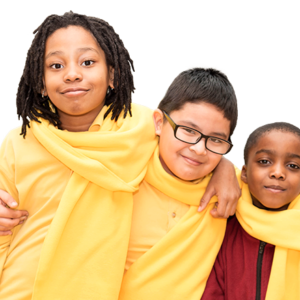A recent New York Times article summarized the growing consensus on COVID-19 and education, noting that “extended school closures did not significantly stop the spread of COVID, while the academic harms for children have been large and long-lasting.”
Also, remote learning “was a key driver in academic declines.”
The approach that many public schools took during much of the pandemic — remote instruction — was the wrong one, and children are paying for it. For instance, the Times noted that in districts where students spent most of the 2020-21 school year learning remotely fell by more than half a grade level in math. In some schools, learning losses were even more severe.
Public schooling deserves much of the blame for the educational hole we are in. But not because many districts stayed remote for so long.
Hindsight is 20/20, an unfair lens through which to judge decisions in a crisis. And COVID was a crisis, at least at first: a rapidly spreading, mysterious, deadly disease. And it was not just a fringe that was afraid. From April 2020 to February 2021, Gallup typically found a majority of Americans either “very” or “somewhat worried” about catching COVID. Not surprisingly, many feared sending their children into close-quarter congregations.
Keeping schools closed made sense. But so did opening them.
It was predictable that students would fall into academic holes while receiving all or much of their instruction virtually. This was especially so for younger children, whose attention is hard to hold in the best circumstances and who would lose out on foundational learning: reading, writing and math skills.
Children were also increasingly likely to feel isolated and adrift as remote learning piled up. Meanwhile, public health data became increasingly clear that children were at low risk of severe COVID.
Families faced serious health and education tradeoffs. However, public schooling made things worse, not because the schools were closed for too long but because the system dictated what all families in a school or district would get, regardless of their unique, individual needs.
The good news for some families was they had options.
As many public schools were closed or hybrid during much of the 2020-21 school year, many families switched their children to private schools. In a Cato Institute survey released in March, 88 percent of private schools reported having reopened by the fall of 2020 or never having closed.
Given this, it is unsurprising that the last three years of Cato’s Private School Enrollment Surveys have found increased student enrollment in private schools. And nearly half of schools reported having more applicants than seats, meaning enrollments could have been even higher but for space.
Families that were able to move to in-person instruction were fortunate. Just as the Times reported more in-person instruction correlated with less learning loss, the federal National Assessment of Educational Progress shows that for Roman Catholic schools — the only private schools with available data — fourth-grade math scores stayed steady between 2019 and 2022 while public schools’ scores fell.
In eighth grade, public school math scores fell more, and from a lower start, compared to Catholic schools. In reading, Catholic school eighth-grade scores rose a point between 2019 and 2022, whereas public school eighth-grade reading scores declined.
Had public funding followed children during the pandemic, more students would have been able to access in-person instruction. Just as important, all families would have been able to seek what they needed whether in-person, hybrid or entirely online.
School choice would have also averted much of the rage over vaccinations and masking mandates that accompanied many re-openings.
But there may be a silver lining to prolonged public school closures: Since 2021, more than 20 states have created new school choice programs or expanded existing ones, allowing funding to follow children to private options.
It might be in the nick of time. Our latest survey found private school enrollment gains slowing.
The reality is that private schools struggle to survive because of absent choice programs. It is tough to charge for something that the government, funded through your taxes, gives away. Many private schools have long had to subsist on precariously thin margins to keep prices low enough that sufficient families could pay twice but high enough to maintain quality. COVID only temporarily tilted things more in their direction.
The most crucial education problem in the pandemic was not that public schools tended not to be in-person but that they forced one answer on everyone. Had parents had school choice, many more children could have avoided learning losses that might take years to overcome.

